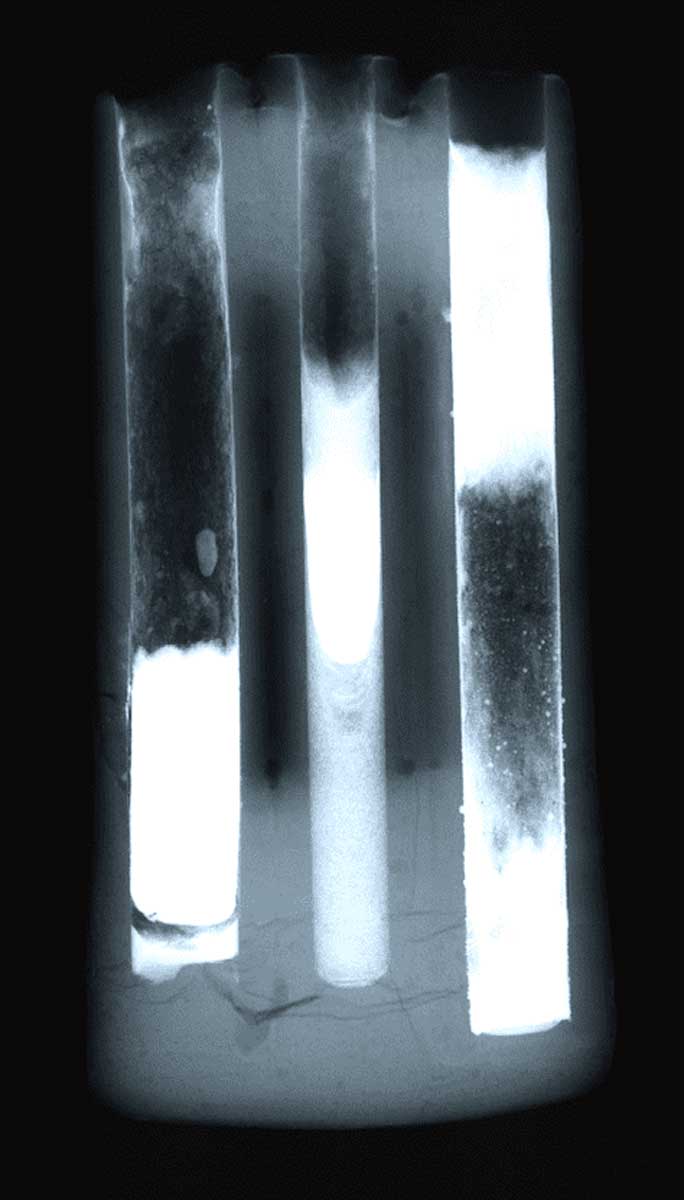Providing for the Afterlife: Ancient Egyptian works from Eton College
Triple Kohl Tube
By Ashley Fiutko Arico, Debbie Kim, Ella Cammarato and Sanchita Balachandran

Description
Kohl tubes representing hollow reeds, either singly or in bundles of as many as seven, first became popular during the New Kingdom. These multi-tube examples accommodated the storage of different types of eye-paint, either in different colors (black or green) or for different occasions. For instance, the individual sections of triple kohl tubes similar to this one are often labeled with the name of one of the three Egyptian seasons, indicating when they were to be used. This container is molded from faience with a vibrant blue glaze. Decorative bands, added in black glaze (manganese), run around the vessel. The cosmetics within the vessel would have been removed from the container using a thin applicator (see ECM 2011). Study of this object using x-rays revealed scrapes in the lead-based kohl that still adheres to the interior of the vessel, providing evidence of such use. In addition to its purely cosmetic use, kohl also aided in reducing glare from the sun and could even be used to treat a variety of eye ailments.
Technical Research
X-rays of the object show the presence of a more dense material (which appears white) on the inside of the tubes. Undergraduate students Ella Cammarato and Debbie Kim worked with Sanchita Balachandran to conduct x-ray fluorescence analysis on the tube openings, all of which confirmed the presence of the heavy metal lead, which is the primary component of kohl. The different amounts of lead present in the tubes may be consistent with the suggestion that not all of the tubes of kohl were used simultaneously. Further examination showed that this faience object was glazed with a copper-based blue-green glaze and painted with a black manganese-based colorant. The object has numerous cracks that were previously repaired at least twice in modern times with both a granular fill material as well as a wax-like material.
